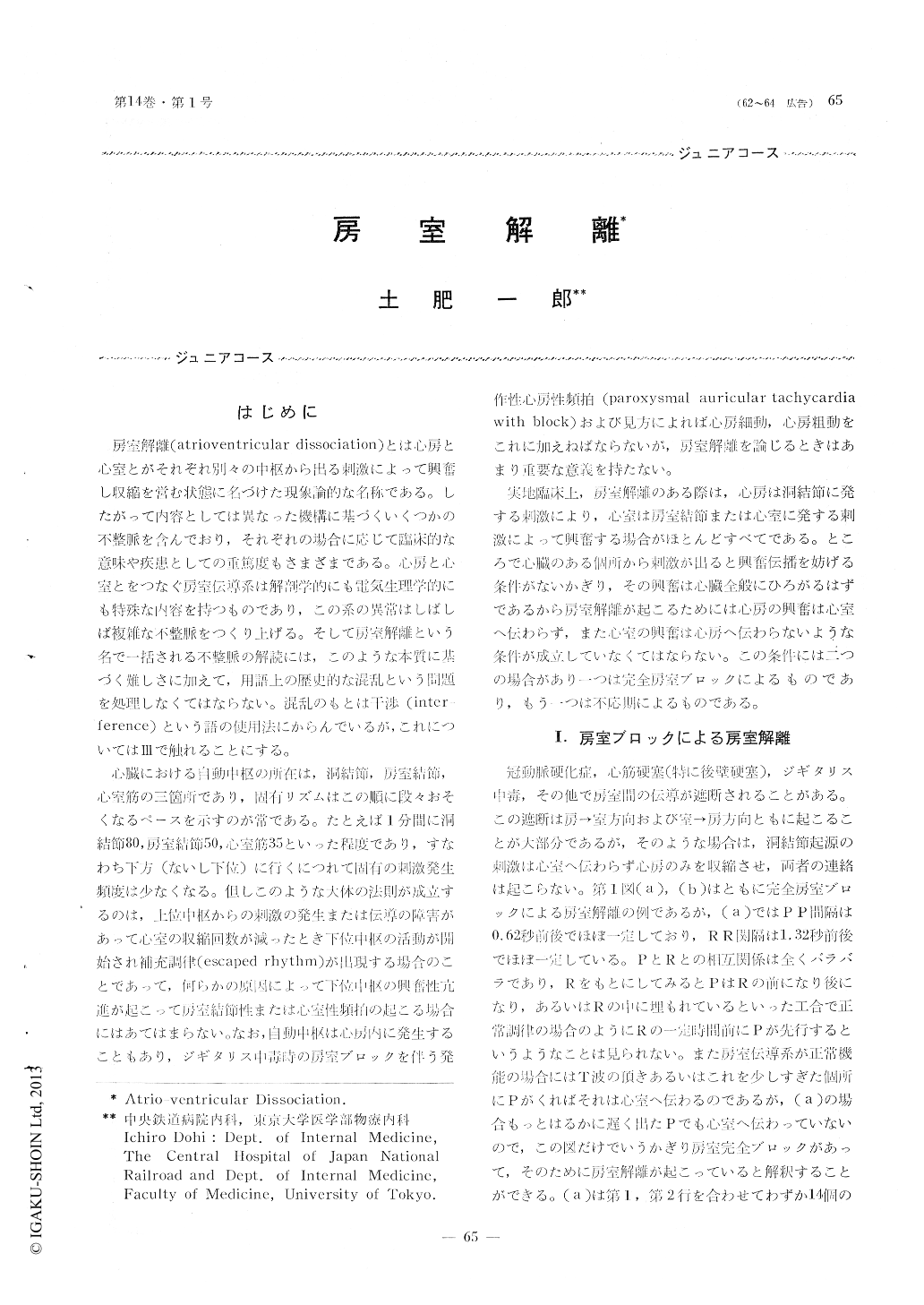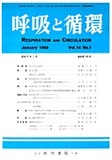Japanese
English
- 有料閲覧
- Abstract 文献概要
- 1ページ目 Look Inside
はじめに
房室解離(atrioventricular dissociation)とは心房と心室とがそれぞれ別々の中枢から出る刺激によって興奮し収縮を営む状態に名づけた現象論的な名称である。したがって内容としては異なった機構に基づくいくつかの不整脈を含んでおり,それぞれの場合に応じて臨床的な意味や疾患としての重篤度もさまざまである。心房と心室とをつなぐ房室伝導系は解剖学的にも電気生理学的にも特殊な内容を持つものであり,この系の異常はしばしば複雑な不整脈をつくり上げる。そして房室解離という名で一括される不整脈の解読には,このような本質に基づく難しさに加えて,用語上の歴史的な混乱という問題を処理しなくてはならない。混乱のもとは干渉(inter—ference)という語の使用法にからんでいるが,これについてはIIIで触れることにする。
心臓における自動中枢の所在は,洞結節,房室結節,心室筋の三箇所であり,固有リズムはこの順に段々おそくなるペースを示すのが常である。たとえば1分間に洞結節80,房室結節50,心室筋35といった程度であり,すなわち下方(ないし下位)に行くにつれて固有の刺激発生頻度は少なくなる。
If the auricles remain under the control of the sinus node while the ventricles beat in an independant rhythm, we call these condi-tions atrio-ventricular dissociation. Complete A-V dissociation may occur with an abnor-mally depressed state of the A-V junction. When the sinus impulse cannot penetrate the A-V junctional tissue, the lower pacemaker initiates automatic impulses and thus controls the ventricular contraction. In these instances, the two pacemakers are mutually independant but sometimes the ventricular contraction exerts an influence upon the rate of initiation of the sinus impulse. Often the P-P interval containing the automatic R wave is longer than the empty P-P interval.
The A-V dissociation may occur in another way. When the lower ectopic pacemaker controls the ventricular contraction in more rapid rate than the sinus node under the condition of ventriculo auricular block, there exists the A-V dissociation without A-V block. In these instances the P wave occurring after the refractory period captures the ven-tricle and thus disturbs the rhythm of the lower pacemaker.
Some writers in the literature use the word interference as a synonym of ventricular capture, and give rise some confusion. The present author proposes following classifica-tion to avoid such confusion of terminology.
(1) A-V dissociation with complete A-V block.
(2) A-V dissociation due to the refrac-tory period of A-V junctional tissue.

Copyright © 1966, Igaku-Shoin Ltd. All rights reserved.


